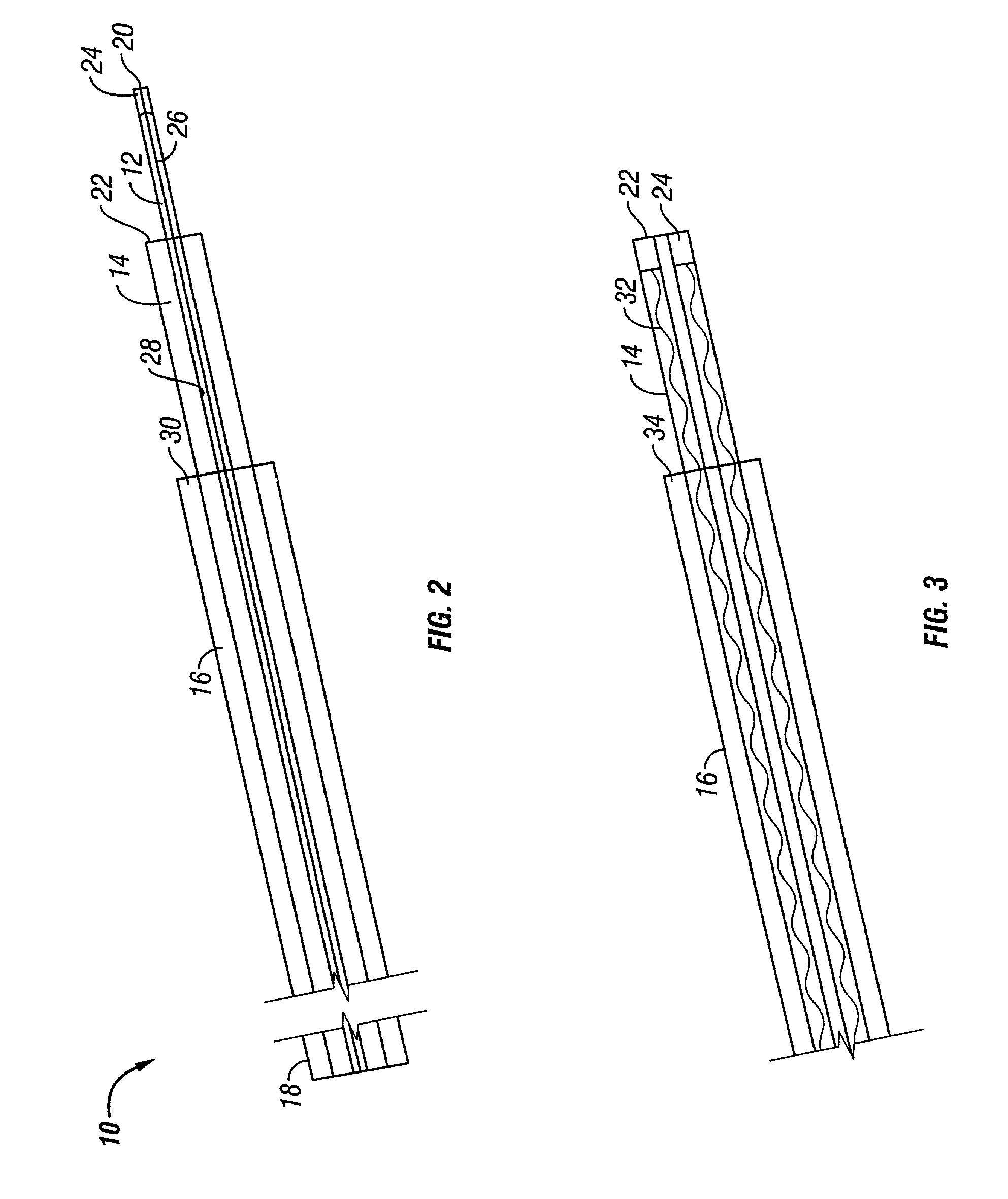Telescopic, separable introducer and method of using the same
a technology of introducer and telescopic catheter, which is applied in the field of telescopic peelaway catheter with a core, can solve the problems of difficult introduction of medical devices into the ostium of the coronary sinus, novel problems such as canulation and pacemaker insertion of coronary sinus branch vein, and about 30% of stenoses located in the left circumflex artery cannot be treated with angioplasty. achieve the effect of adequate torque control and close toleran
- Summary
- Abstract
- Description
- Claims
- Application Information
AI Technical Summary
Benefits of technology
Problems solved by technology
Method used
Image
Examples
second embodiment
[0047]Similarly, in FIG. 5, what is shown is a plan elevational side view of one embodiment of splittable inner sheath 14 of the invention. Again a proximal handle 42 is connected to a hub 44. A flexible sidearm tube 46 is communicated to hub 44 and is distally terminated with a hemostatic valve 48 through which contrast agent and other fluids may be injected into lumen 26 of inner sheath 14. Inner sheath 14 may lie in a single plane, such as the plane of FIG. 5. However, it is to be expressly understood that portions of inner sheath 14 may be biased above or below the plane of FIG. 5 to provide an arbitrarily, three dimensionally shaped sheath 14. Portion 36 is the defined as the proximal portion of inner sheath 14 and is a generally unbiased, flexible section of inner sheath 14 leading from the percutaneous introduction point into the left cephalic, auxiliary or subclavian veins and through the vasculature leading toward the atrium and coronary sinus of the heart.
[0048]A biased po...
third embodiment
[0051]Still further, in FIG. 6, what is shown is a plan elevational side view of one embodiment of splittable inner sheath or guide 14 of the invention. Again a proximal handle 42 is connected to a hub 44. A flexible sidearm tube 46 is communicated to hub 44 and is distally terminated with a hemostatic valve 48 through which contrast agent and other fluids may be injected into lumen 26 of inner sheath 14. Inner sheath 14 may lie in a single plane, such as the plane of FIG. 6. However, it is to be expressly understood that portions of inner sheath 14 may be biased above or below the plane of FIG. 6 to provide an arbitrarily, three dimensionally shaped sheath 14. Portion 36 is the defined as the proximal portion of inner sheath 14 and is a generally unbiased, flexible section of inner sheath 14 leading from the percutaneous introduction point into the left auxiliary subclavian vein and through the vasculature leading toward the atrium of the heart.
[0052]A biased portion 38 of inner sh...
PUM
 Login to View More
Login to View More Abstract
Description
Claims
Application Information
 Login to View More
Login to View More - R&D
- Intellectual Property
- Life Sciences
- Materials
- Tech Scout
- Unparalleled Data Quality
- Higher Quality Content
- 60% Fewer Hallucinations
Browse by: Latest US Patents, China's latest patents, Technical Efficacy Thesaurus, Application Domain, Technology Topic, Popular Technical Reports.
© 2025 PatSnap. All rights reserved.Legal|Privacy policy|Modern Slavery Act Transparency Statement|Sitemap|About US| Contact US: help@patsnap.com



